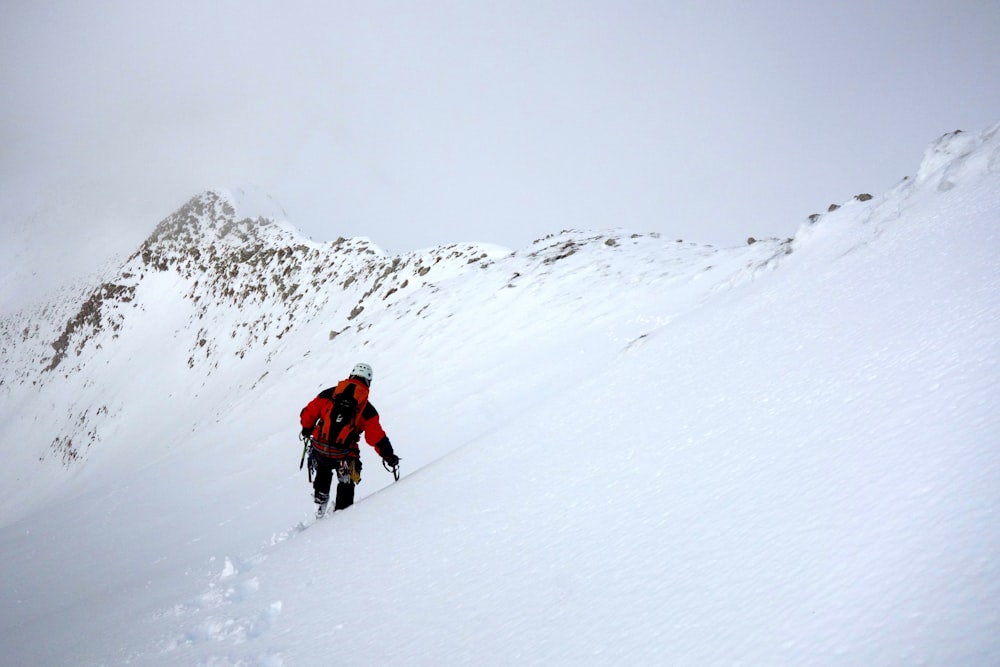Summiting Success: A Comprehensive Guide for Novice Mountaineers

I. Introduction
A. The Allure of the Peaks
In ancient civilizations, mountains were revered as divine entities. For example, Mount Olympus in Greek mythology was considered the dwelling place of the gods. This mystical connection laid the groundwork for the enduring allure of mountains, evolving into a modern fascination for exploration and self-discovery.
II. Understanding the Basics
A. Types of Mountains
Dive into the historical significance of iconic mountain ranges. The Himalayas, with its towering peaks, have been a beacon for spiritual seekers. The Alps, historically a challenging barrier for trade, showcase the dual nature of mountains—both obstacles and inspirations for humanity.
B. Essential Gear
Trace the evolution of climbing gear from the rudimentary tools of early mountaineers to the cutting-edge equipment available today. Anecdotes of early climbers using makeshift gear highlight the resilience and determination that define the spirit of mountaineering.
III. Physical and Mental Preparation
A. Fitness Regimen
Explore the training routines of legendary mountaineers like Sir Edmund Hillary and Reinhold Messner. Their physical conditioning routines set the standard for aspiring climbers, emphasizing the importance of strength, endurance, and acclimatization.
B. Mental Resilience
Delve into stories of climbers overcoming psychological hurdles. The tale of Arlene Blum, the first woman to lead an all-female ascent of Annapurna, serves as an inspiration for confronting fear and adversity in the mountains.
IV. Technical Skills
A. Navigation
Unearth the history of navigation in mountain terrain. Early explorers relied on primitive maps and the stars, paving the way for modern techniques. Highlight the exploits of mapmakers and navigators who contributed to our understanding of mountain landscapes.
B. Knot Tying
Trace the origins of essential climbing knots, dating back to the alpine traditions of the Alps. Understanding the historical context of knot tying enhances the appreciation for these fundamental skills.
C. Basic Climbing Techniques
Explore the evolution of climbing techniques from early alpinism to modern ice climbing. Historical examples, such as the first ascent of the Matterhorn, showcase the progression of climbing methods.
V. Safety Measures
A. Risk Assessment
Examine historical mountaineering disasters and the lessons learned. The tragic story of the 1996 Everest disaster, as depicted in Jon Krakauer's "Into Thin Air," underscores the critical importance of risk assessment.
B. Emergency Protocols
Explore the evolution of emergency response in mountain environments. Anecdotes of daring rescues and survival stories provide insights into the importance of preparedness.
VI. Choosing Your First Climb
A. Beginner-Friendly Peaks
Provide historical context for popular beginner climbs. Mount Hood in the U.S., for instance, gained prominence as a training ground for mountaineers during the Pacific Northwest climbing boom in the early 20th century.
VII. Learning from Experts
A. Joining a Climbing Community
Trace the history of mountaineering clubs and organizations. The Alpine Club, founded in 1857 in the UK, was a pioneering community that fostered a culture of exploration.
B. Hiring a Guide
Examine the role of early guides and porters in mountain exploration. The contributions of Tenzing Norgay, a Sherpa guide on the first successful Everest ascent, showcase the vital role of guides in the history of mountaineering.
VIII. Real Stories from Beginners
A. Personal Narratives
Share narratives from historical novice mountaineers. The accounts of early female climbers like Fanny Bullock Workman breaking gender norms add a layer of historical significance to the personal journey of climbing.
IX. Environmental Responsibility
A. Leave No Trace Principles
Explore the historical impact of mountaineering on the environment. The tragic tale of Mallory's lost camera on Everest in 1924, found decades later, underscores the enduring impact of human activity on the mountains.
X. Conclusion
A. The Journey Begins
Wrap up with a reflection on the historical tapestry of mountaineering. Each step taken by early climbers contributed to the rich legacy and traditions that novice mountaineers inherit today. The mountains, steeped in history, await the next generation of adventurers.
























































